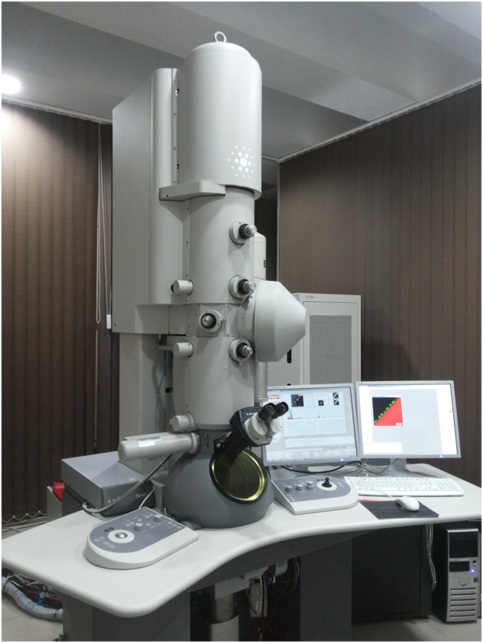SAHA INSTITUTE OF NUCLEAR PHYSICS
Department of Atomic Energy, Govt. of India
| Transmission Electron Microscope |
||
 |
||
| Description |
|
|
| Manufacturer |
|
|
| Model |
Tecnai G2 F30 S-TWIN |
|
| Installation |
October, 2012 at the ground floor of Phase III building |
|
| System Control |
Instrument runs using the TIA interface, and additional software includes: Gatan Digital Micrograph (TIA-embedded version), Xplore3D (tomography package with data acquisition, Inspect3D, TrueImage (focal series reconstruction). |
|
| Resolution | 2.0 Å point-to-point resolution, 1.02 Å line resolution, 1.4 Å information limit in TEM mode 0.75eV in EELS mode |
|
| Magnification |
Magnification range in TEM mode: 60x - 1000Kx Magnification range in STEM mode: 150x - 230Mx |
|
| Accelerating voltage |
Flexible high tension (50, 100, 150, 200, 250, 300 kV and values in between) |
|
| Electron gun |
|
|
| Detectors |
HAADF detector from Fischione (model 3000) and on-axis BF/DF detector EDAX SUTW (super ultra thin window) and analyzer, 0.13 srad EDS solid angle Energy Loss Spectroscopy (EELS) were carried out using a post-column Gatan Quantum SE (model 963) |
|
| Vacuum System |
Fully interlocked differentially pumped column Clean vacuum system with turbo molecular pump, pre-pumping column, gun and specimen airlock 150 l/s Ion Getter Pump on specimen area Vacuum levels: specimen chamber 2.7 x 10-5 Pa; gun 5 x 10-7 Pa |
|
| Stage movements |
Fully computer-controlled, eucentric side-entry, high stability CompuStage Choice of a variety of specimen holders X, Y movement 2 mm, specimen size 3 mm Specimen recall reproducibility ≤ 0.1 μm (x, y) and ≤ 0.1° (α tilt) attainable Drift < 0.5 nm/minute with a standard holder ±40° tilt with double-tilt holder, ±70° tilt with tomography holder |
|
|
Image media |
Digital images are captured using Gatan Orius SC1000B CCD camera |
|